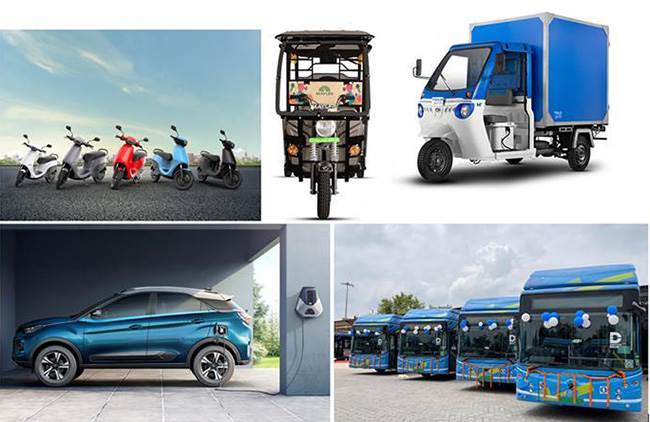Weeks after India announced the discovery of 5.9 million tonnes of inferred lithium reserves in Jammu & Kashmir, the first in the country, the Geological Survey of India (GSI) is conducting exploration in eight additional states and Union territories during the current field season (FS) 2022-2023.
The new exploratory move to scout for lithium reserves assumes importance given that the country’s electric vehicle (EV) sector is still totally dependent on imports, particularly from China, for its lithium requirements. If these discoveries prove successful, India may be able to substantially reduce its reliance on costly imports and could even become an exporter in the long-term.
In an RTI response to Autocar Professional, GSI, which is mandated with creating and updating mineral resource assessments, revealed that it is conducting exploration of lithium and related materials in Rajasthan, Chattisgarh, Jharkhand, Arunachal Pradesh, Nagaland, Meghalaya, Ladakh, and Gujarat, in addition to Jammu & Kashmir, in the field season 2022-23. “The field activities are in progress,” the Geological Survey of India, which functions under the Ministry of Mines, said in its reply.
The United Nations Framework Classification for Resources (UNFC) classifies the exploration of mineral deposits into four stages: reconnaissance (G4), preliminary exploration (G3), general exploration (G2), and detailed exploration (G1).
Hunt for green energy across India
In the Nagaur area of Rajasthan, GSI is currently building on scientific evidence that suggests the presence of lithium with values of up to 6701 parts per million (ppm) in debris sheets, up to 3,400 ppm in channel samples, and up to 1,400 ppm in core samples. Previous studies have indicated that a resource of 2.5 million metric tons of lithium is present in the granite, although further studies have been recommended.
Besides this, the Bhabha Atomic Research Center (BARC) has also indicated the presence of lithium and topaz in the granite, which can be recovered as byproducts. The investigation has currently reached the G2 stage.
Meanwhile, preliminary exploration for lithium and associated minerals in the Katghora-Rampur area, Korba District, Chhattisgarh, has reached the G3 level. The mining site is close to the Bilaspur-Raigarh metamorphic belt and is important because it has an unusual amount of lithium, GSI said. The presence of leucogranite, a light-coloured branitic and igneous rock found in this region, has been found to contain lithium-bearing mica along with other minerals. The lithium bearing micas are pinkish to golden brown in colour with sizes ranging from 5 mm to 3 centimetres.
Significantly, lithium content was found to be substantially higher in the cores of pink mica grains compared to their margins. In the same way, a reconnaissance survey for lithium, rare earth elements (REE), and related mineralisation in the Tamta, Raghunathpur, and Sureshpur areas of the Raigarh and Jashpur districts of Chhattisgarh found anomalous lithium values in composite stream samples in and around Kilkila that ranged from 19.1 ppm to 137.9 ppm. In and around Raghunathpur and Diwanpur, they also found strangely high levels of lithium in stream sediment samples, up to 266 ppm.
Similarly, surveys are being conducted in and around the Tilaiya Block in the Koderma District of Jharkhand, where geochemical mapping has shown high concentrations of lithium, cesium, and other elements. The lithium value ranges were found to be from 15.57 to 122 ppm.
While still at the preliminary exploration stage, the deposits in J&K alone form 6 percent of the world’s identified lithium resources. Assuming the global average reserve-resource ratio, the deposit could be more than sufficient to electrify the entire passenger vehicle and two- wheeler industry’s installed manufacturing capacity in India, says a research report by consultancy firm Jefferies.  EV sales in India crossed a million units in 2022 and can only accelerate further, which means there will be a sharply increased need for lithium in the coming years.
EV sales in India crossed a million units in 2022 and can only accelerate further, which means there will be a sharply increased need for lithium in the coming years.
Why India-sourced lithium matters
Industry experts say that lithium, a soft, silvery-white metal, is one of the most important parts of rechargeable batteries. It is still hard to find around the world and most of it is found in a few places. Bolivia, Argentina and Chile make up the ‘lithium triangle’ of South America. The US, Australia, and China control most of the world’s supply, with 6–12% of its resources, 78% of its reserves, and 96% of its 98 metric tonnes of annual production.
As India transitions to becoming a net-zero economy, it is imperative to find dependable sources of lithium. In the absence of such India-specific discoveries, the country will be compelled to remain dependent on foreign countries to source lithium, similar to the oil imports from the Middle East which see a forex outflow of over US$119 billion each year.
India’s EV industry had a record year in 2022 with over a million units sold and 210% year-on-year growth. And the going looks good this year too – with retails of 106,107 EVs, February was the fifth consecutive month that EV sales charged past the 100,000 units mark. This pace of growth also translates into increased demand for batteries and in turn lithium.
Local sourcing of lithium will, in the long run, drive down costs of batteries, which are the most expensive component of an EV and account for around 30-40% of the total EV price.High initial price of EVs remains an impediment to their greater adoption, which is why GSI’s efforts to locate and unearth lithium reserves across the country are laudatory. It’s the logical step towards achieving Atmanirbharta in the EV sector.
However, due caution should also be exercise in the hunt for lithium. What needs to be considered is the specific region ecosystem, the level of fragility as also the lack of consensus about the impact and risks of lithium mining. This is a project that calls for a high level of collaboration between all stakeholders.
